Affiliate links on Android Authority may earn us a commission. Learn more.
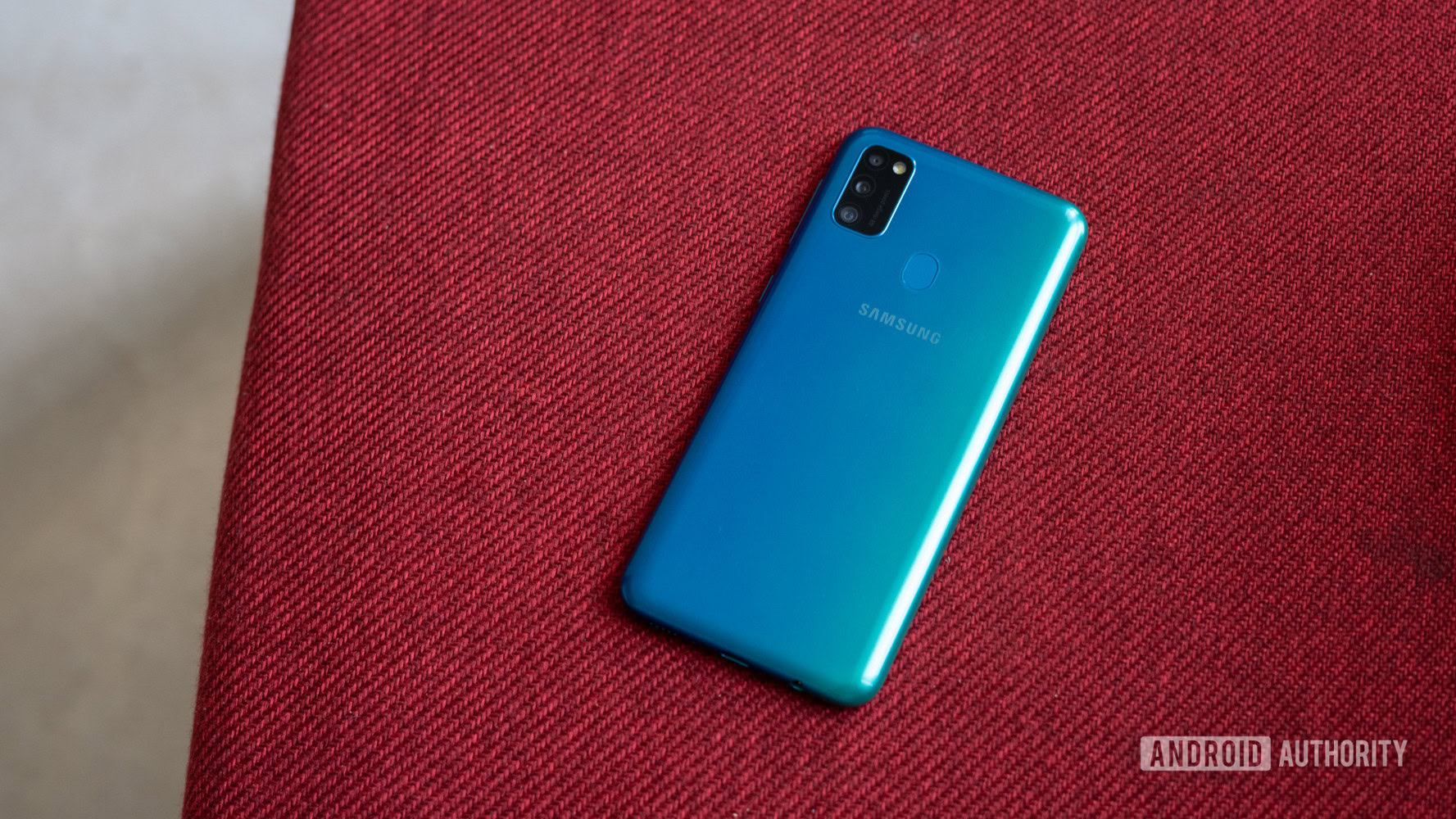
Samsung Galaxy M30s
What we like
What we don't like
Our scores
Samsung Galaxy M30s
From near complacency to a constant onslaught of devices, Samsung’s 2019 strategy for mid-rangers is quite the about-turn. The first run of M-series phones were very competent devices that helped Samsung claw back mid-range relevance from the likes of Xiaomi. Now in its second generation, the Galaxy M30s bumps up the camera specs and improves the hardware, while keeping the design similar. Is this enough to fend off newer competition from brands like Realme?
We find out in the Android Authority Samsung Galaxy M30s review.
Galaxy M30s: The big picture
The Galaxy M30s is the latest in Samsung’s blockbuster M-series of mid-range hardware. Launched earlier this year, the value-focused lineup has already sold a few million units. It started with the M10, but Samsung has since expanded the range to include something for everyone.
When we reviewed the Samsung Galaxy M30, we found it to be a reliable piece of kit that would be a great option for anyone who isn’t too demanding of hardware, and instead, cares about the quality of the display and user experience.
What’s in the box
- Galaxy M30s
- 15W charger
- USB-C cable
- SIM ejector tool
- User manual
The Galaxy M30s ships with the bare essentials. There’s no case included in the box, but you do get a 15W fast charger, as has been the case with the recent crop of Samsung mid-rangers. Other contents include a SIM ejector tool, a USB-C cable, as well as a user manual.
Design
- 15.9 x 0.9 x 7.5 cm
- 186g
- Polycarbonate build
- Waterdrop notch
- 20:9 aspect ratio
- USB-C
The Samsung Galaxy M30s doesn’t stray too far from the design language of the M30, at least as far as the front of the phone is concerned. The homogeneity across product lines, which we first noted in our Galaxy M30 review, continues to be a feature with the second generation hardware. Up front, the phone has a waterdrop notch and minimal bezel on the sides. There continues to be a fairly substantial chin along the bottom edge.
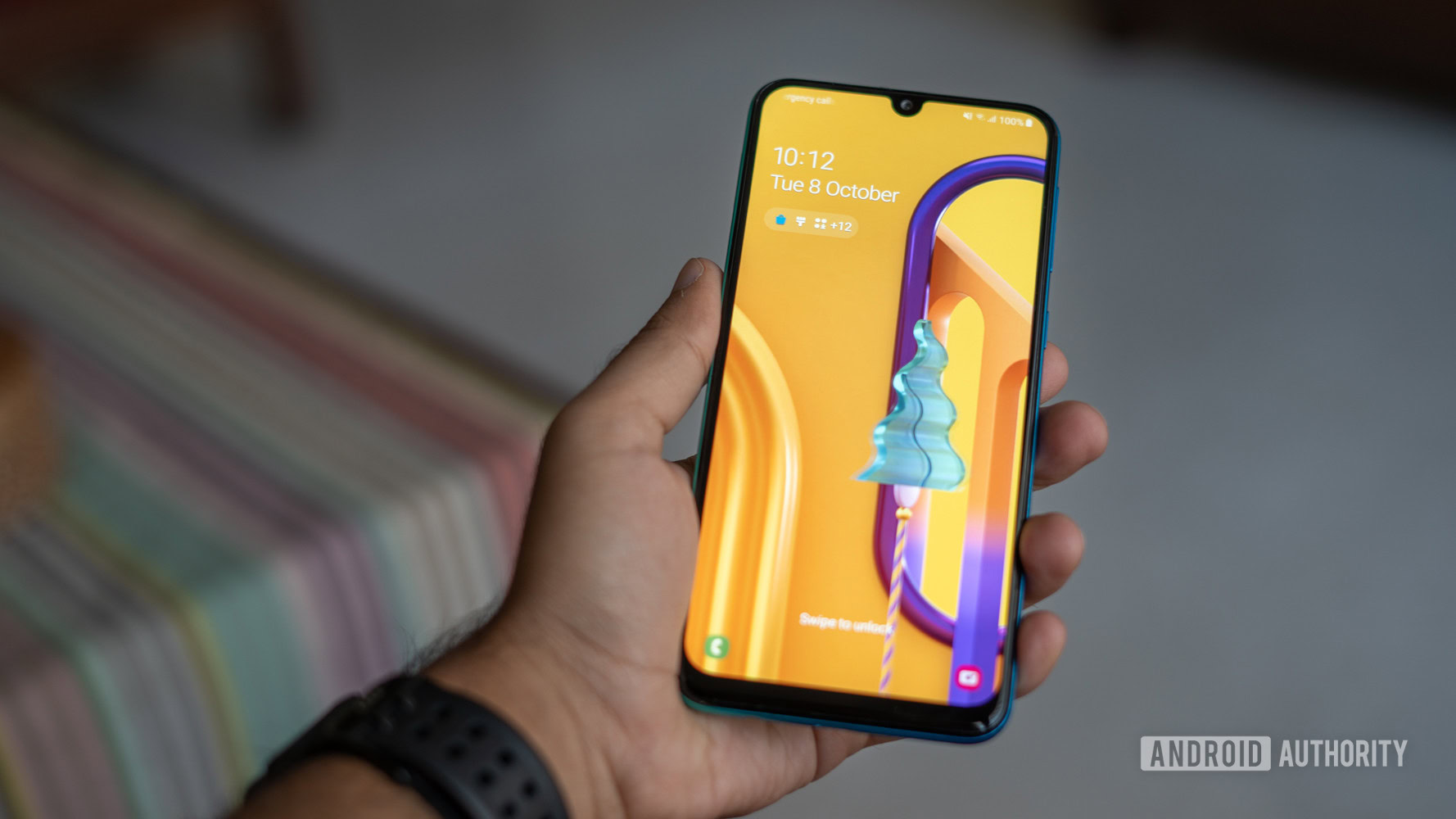
I found the large chin to be irksome. It takes away from the otherwise visually appealing fascia of the Galaxy M30s. The Infinity-U notch is no longer a unique or exceptional feature in the category, but it’s unobtrusive and you get used to it in a matter of minutes.
Over on the right is the volume rocker and power button. Both buttons sit nearly flush with the body of the phone and offer very little tactical feedback. I’m not quite sure why Samsung has made changes to what was a near perfect button layout. At least the ergonomics continue to be on point, and the buttons and rear-mounted fingerprint reader are easily accessible. Like on the Galaxy M30, the fingerprint scanner here is fast and reliable.
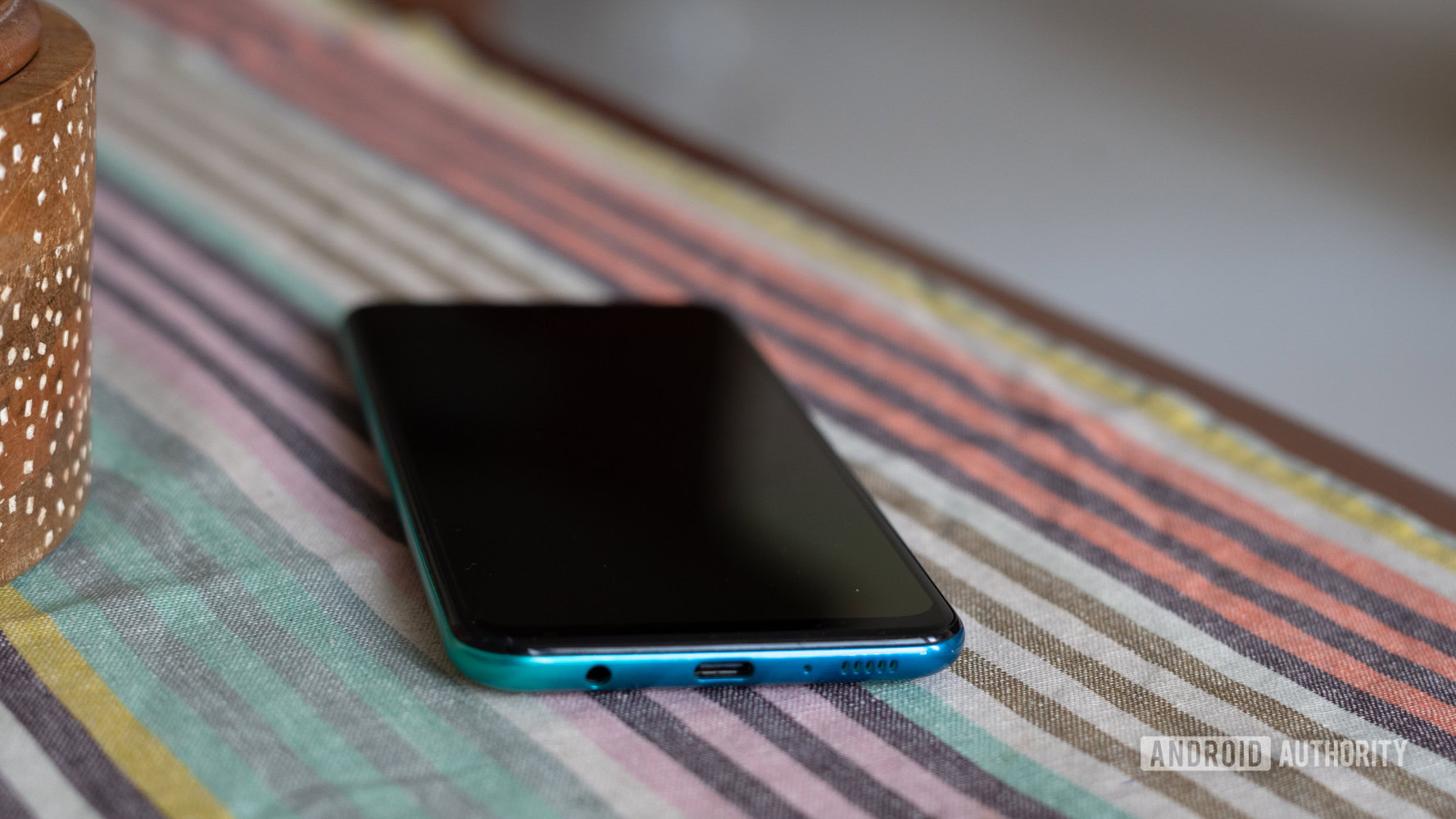
The bottom edge sports the speaker grille and the USB-C port, as well as a headphone jack. On the left-hand side is a hybrid triple-SIM slot that will let you place dual nano SIM cards, as well as a microSD card for storage expansion.
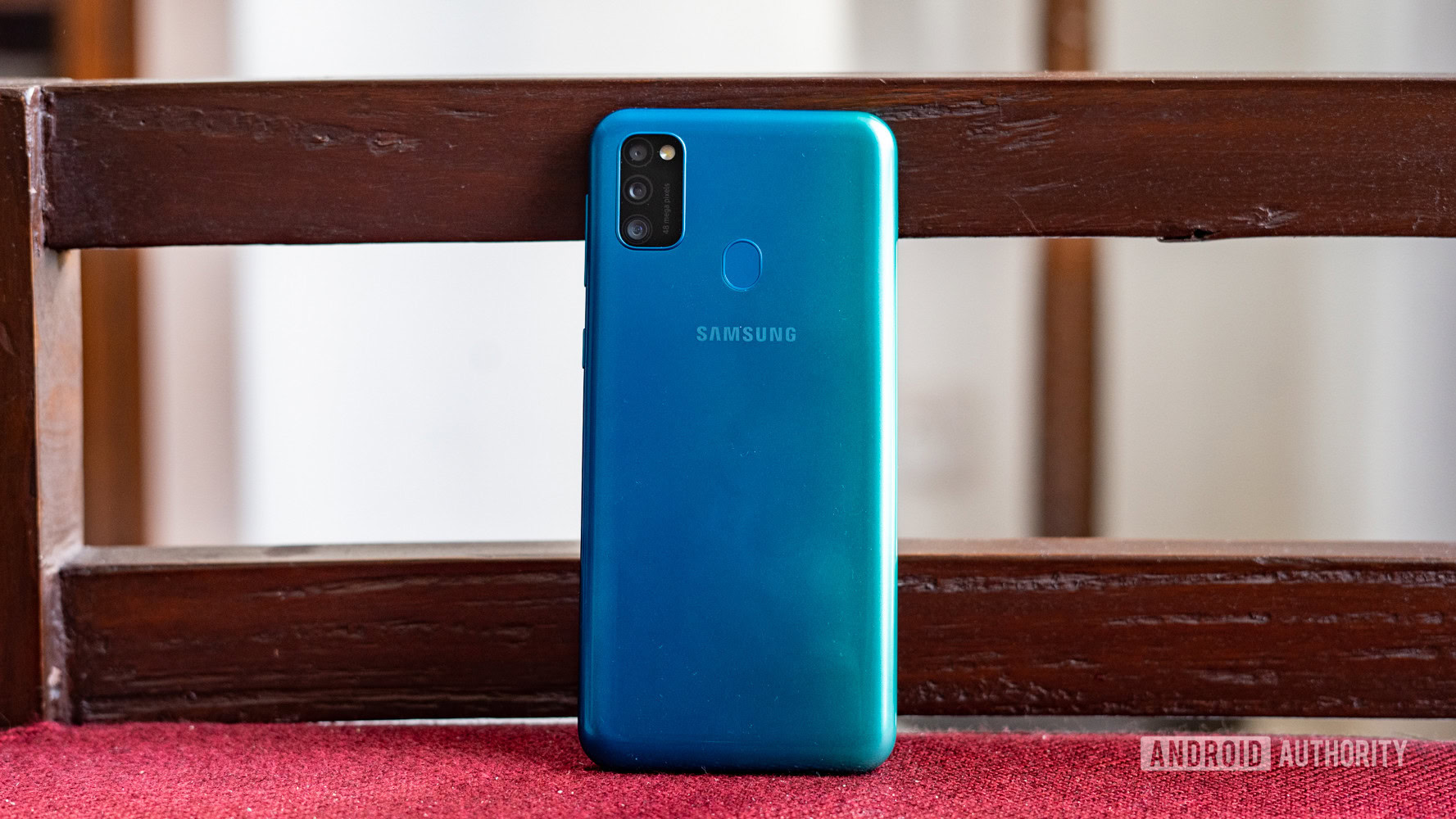
Because of the increase in battery capacity, the thickness of the Galaxy M30s has increased a bit compared to the Galaxy M30. Because of this, the hardware is a bit more rounded around the edges and has an almost pebble-like feel to it, in the way the slightly tapered edges bulge towards the middle. The grey garb of the M30 has also been tossed out in favor of the green and ultramarine color scheme we have here. Unfortunately, the sparkles in the paint mix cheapen the effect, and the phone looks and feels just short of premium. The plastics feel a bit cheaper than those on the Galaxy M30.
Display
- 6.4-inches
- 1080 x 2400
- 20:9
- Super AMOLED
- 411ppi
I really like the fact that it is now possible to get affordable hardware with a Super AMOLED display. The Galaxy M30s is no exception, and it continues to use a fantastic-looking panel similar to what we saw on the Galaxy M30.
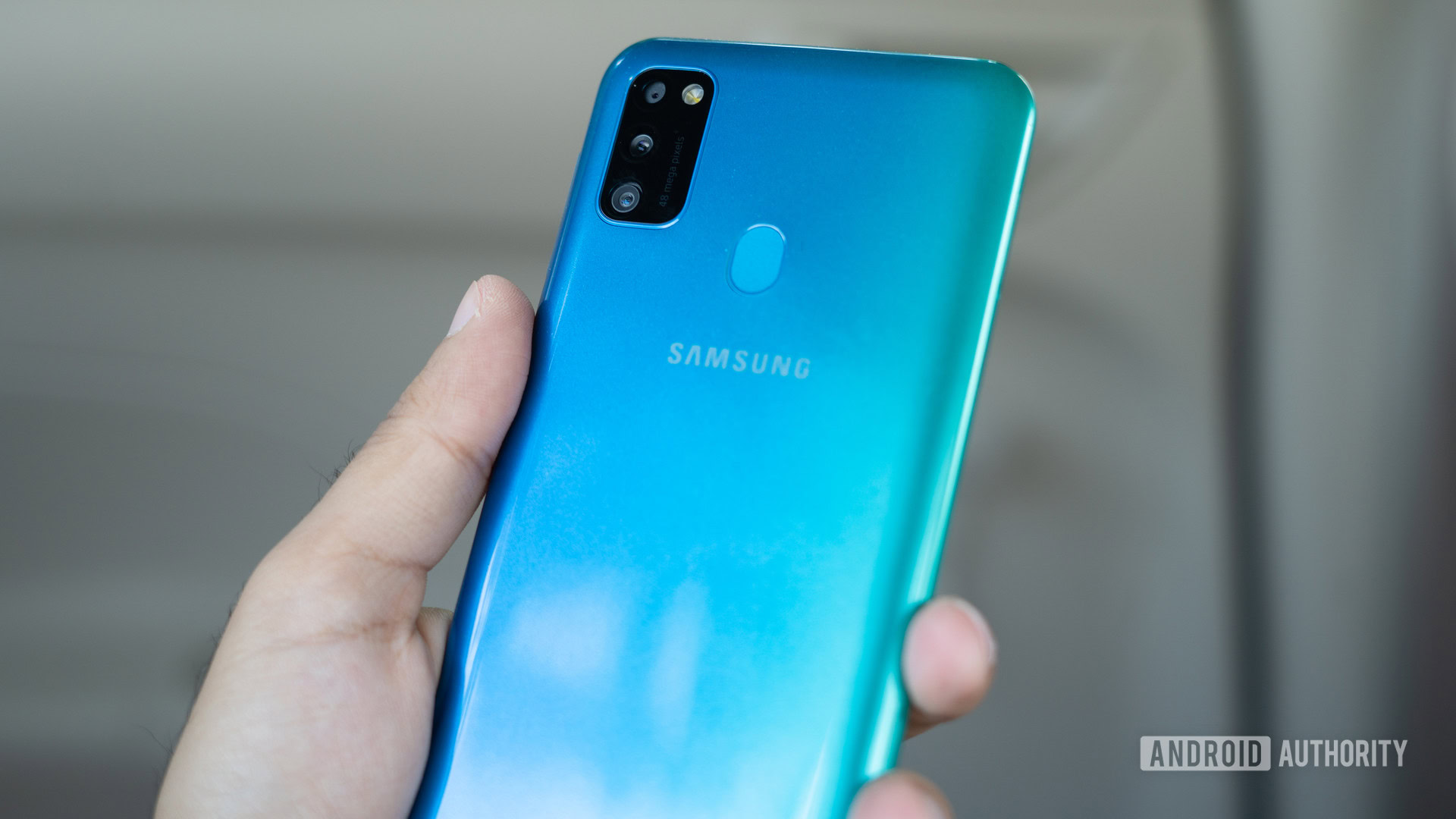
Typically Samsung, the display is ever so slightly over-saturated, but it makes all content look a bit more immersive. The white point is very accurate and there is no unnecessary boost in blues and greens, like we saw on the realme XT. Unfortunately, we measured peak brightness levels of just 370 nits, which just isn’t that great when measured against competing devices. Outdoor visibility was passable, but you might find yourself running for cover if you plan to read a lot of texts in bright sunlight.
The less-than-stellar peak brightness holds back the display from being truly great.
Overall, I think Samsung has done a fantastic job with the display on the Galaxy M30s. The color accuracy is on point and it’s a pleasure to watch media on this. The less-than-amazing peak brightness levels are all that hold it back from greatness.
Performance
- Exynos 9611
- 4 x Cortex A73 + 4x Cortex A53 cores
- Mali G72 MP2
- 4GB/6GB RAM
- 64GB/128GB storage
- microSD expansion
The Samsung Galaxy M30s is powered by an all-new Exynos 9611 chipset. Using a combination of four Cortex A73 cores and four Cortex A53 cores clocked at 2.3Ghz and 1.7Ghz respectively, performance is in line with Qualcomm’s Snapdragon 660 chipset found on the Redmi Note 7 and the Nokia 7.2. That is to say, there’s oodles of power here for most users, but it isn’t quite the fastest chipset at the price point.
I put the phone through a few days of use, and it held up absolutely fine. It comes as no surprise, but like practically every mid-ranger these days, general use doesn’t really pose a challenge to the hardware. Jumping between apps, multitasking, everything works just fine and without any lag or slowdowns anywhere. If you plan to hold on to the phone for a few years, I would recommend stepping up to the 6GB RAM variant, which is what we tested out.
The Galaxy M30s heats up drastically around the camera module with extended gaming.
The phone runs games like PUBG at the highest setting just fine, and outside of the occasional frame drop, I didn’t notice any performance-related issues. On the other hand, the phone heated up drastically around the camera module. Fifteen minutes into the game, I had to put the phone down to cool it down. If you play intensive games while on the move in the heat, this is definitely a point you’ll want to keep in mind.
Benchmark tests show that the performance is similar to the Qualcomm Snapdragon 660 chipset. In AnTuTu, the phone scores 152,428 points. Meanwhile, the single-core and multi-core Geekbench scores for the Galaxy M30s were 1,674 and 5,329 respectively. This is within spitting distance of the 1,636 and 5,421 scores that we saw on the Redmi Note 7S sporting a Snapdragon 660 chipset.
Phone calls sound great at both ends, and I noticed that the Galaxy M30s held a better connection indoors than some of its competitors like the realme 5 Pro. On the other hand, WiFi performance was very iffy. On larger downloads, the Galaxy M30s would keep dropping the connection and it barely managed to hold the WiFi across my apartment.
Battery
- 6,000mAh
- 15W fast charging
The Galaxy M30s has upped battery capacity even further. With a 6,000mAh cell, battery life is fantastic. The phone will more than easily last not just a day, but even two days of use depending on what you are doing with it. Surprisingly though, it wasn’t quite the best battery life that we’ve observed in this segment. The realme 5, with not-too-dissimilar specs, managed to outpace the Galaxy M30s in our testing, and this was with a 5,000mAh battery.
In our tests, the Galaxy M30s managed over 16 hours of continuous web browsing. Charging speeds using the included 15W charger were reasonably fast for the battery capacity. It took 158 minutes to top off the phone.
Software
- Android Pie
- Samsung One UI
The Galaxy M30s runs Android Pie with Samsung’s One UI layer on top. Not much has changed in how the software works, and general smoothness and optimisation are plenty good. I found the addition of lock screen animations and general transition flourishes across the interface a bit overbearing. However, they are easy to turn off.
Compared to the Galaxy M30, there are a few more preloaded apps this time around, most of which cannot be removed. Between the Microsoft app suite, Samsung’s own first party apps and the Galaxy Apps store, as well as Netflix, Facebook, and the multitude of third-party apps, I counted over twenty pre-loaded apps on the phone.
One UI adds some great customisation features for end users. These include the ability to switch between gestures and a navigation bar. You can even customise the order of buttons in the navigation bar which should help users coming in from other devices.
Camera
- Rear Cameras
- 48MP, f/2.0 primary camera
- 8MP, f/2.2 ultra wide
- 5MP, f/2.2 depth sensor
- Front Camera
- 16MP, f/2.0 front camera
- 4K, 30FPS video
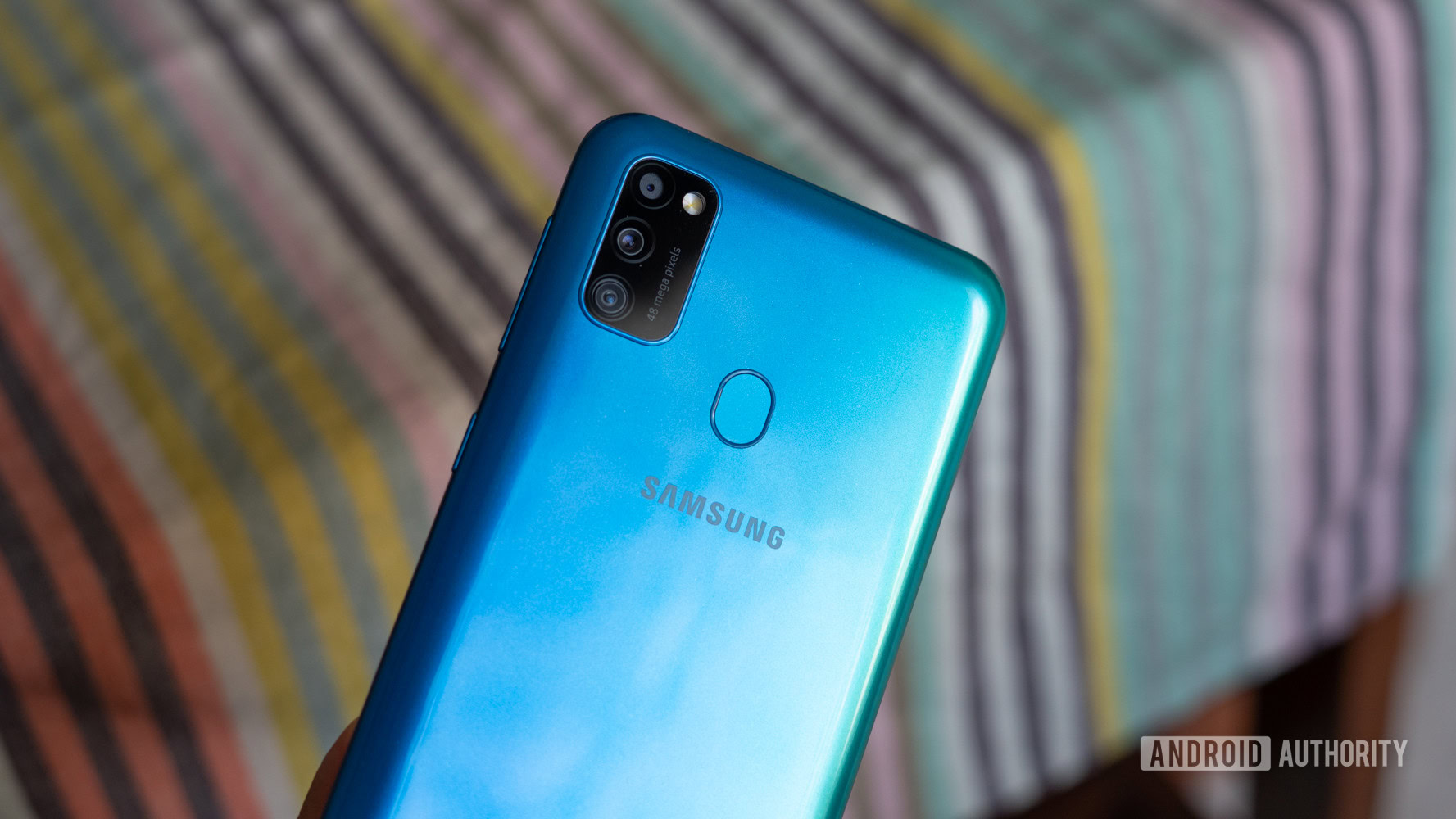
On paper, the cameras on the Galaxy M30s are a significant step up from the setup on the Galaxy M30. The phone now sports a 48MP Samsung ISOCELL sensor on its primary camera module. Unfortunately, actual image quality seems to be a step down from what we saw on the M30.

Color rendition seems to be all over the place with the primary camera on the Galaxy M30s. While the foreground subject here is bright and vibrant, the HDR processing has boosted the blues in the background to unrealistic levels. What was an early evening shot with enough sunlight, now looks like something shot at twilight.
While color tuning seems to be an issue on both the primary and wide-angle cameras, the latter also suffers from significant loss in details. To compensate, the Galaxy M30s boosts up sharpening. This results in an image that looks passable for social media at first glance, crop in just a bit though and you will see that there are no details at all.
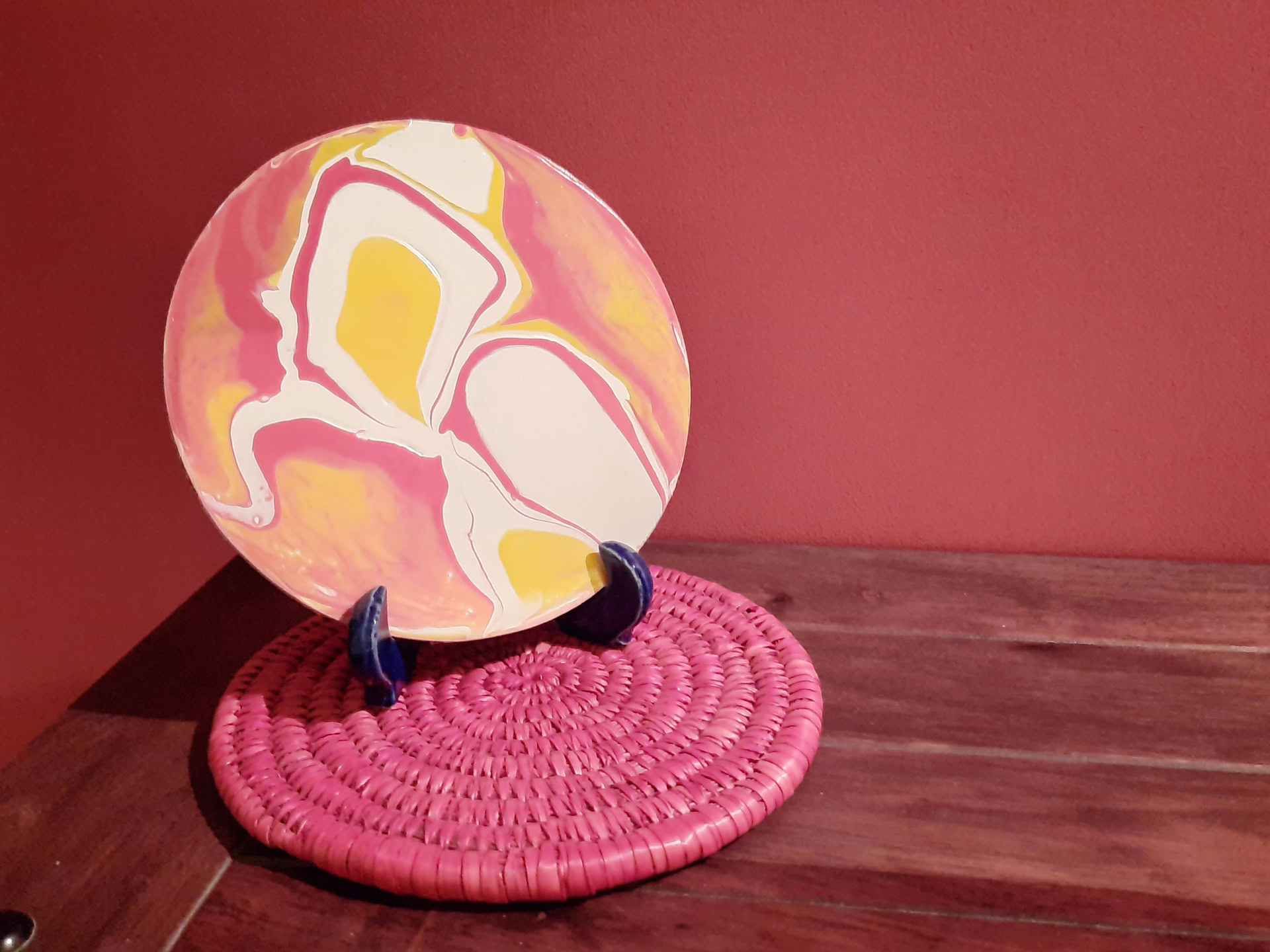
Low-light images with night-mode turned on are quite bright, but once again details are soft. Needless to say, you will need to be absolutely still to get a shot in this mode. Moving subjects are out of the picture. You can take a look at full resolution image samples here.
Video recording is passable with significant noise when shooting indoors. Outdoors, colors look nicely saturated, but there is still a hint of over sharpening. Electronic stabilisation is available, but shooting with it switched on deteriorates image quality quite drastically. The selfie camera takes nicely detailed images. I like that Samsung is using a wider than normal camera by default and offers a software toggle to switch between wide and normal images.
Audio
- Headphone jack
- No aptX HD support
The Galaxy M30s comes equipped with a headphone jack as is the case with most mid-range smartphones. Audio output from the headphone jack is pretty good and I noticed no distortion or low-end hiss when paired with quality earphones. The audio has good dynamic range, but Samsung provides a system level equaliser as well as Dolby Atmos virtualisation in case you want to play around with sound effects.
Audio output from the speaker is about as loud as anything else in the category. There’s an emphasis on mids and highs. Bass heavy tracks sound muffled and lack any semblance of depth. If you are all in on wireless streaming, the phone supports aptX and LDAC in addition to AAC based streaming. The phone does Samsung’s scalable codec too in case you are using the Galaxy Buds. Unfortunately, you do not get support for aptX HD on the Galaxy M30s.
Specifications
| Samsung Galaxy M30s | |
|---|---|
Display | 6.4 inches, 1080 x 2400 pixels (~411 ppi), 'Infinity-V' Super AMOLED 20:9 |
SoC | Exynos 9611 (4 x Cortex A73 at 2.3GHz, 4 x Cortex A53 at 1.7GHz) |
GPU | Mali-G72 MP2 |
RAM | 4/6GB |
Storage | 64/128GB Micro SD Expansion |
Cameras | Rear: 48MP, f/2.0, 8MP, f/2.2 Ultra Wide 12mm, 5MP, f/2.2 Depth Sensor Front: 16 MP, f/2.0 |
Battery | 6,000mAh, USB-C Fast Charging at 15W |
IP Rating | None |
Fingerprint Sensor | Yes |
Sensors | Accelerometer, proximity, magnetometer, compass, gyroscope |
Software | Android 9, Samsung One UI |
Headphone jack | Yes |
Dimensions | 15.9 x 0.9 x 7.5 cm 186g |
Value for money
- Galaxy M30s – 4GB RAM, 64GB storage — Rs. 13,999 (~$197)
- Galaxy M30s – 6GB RAM, 128GB storage – Rs. 16,999 (~$240)
For all its issues, the Galaxy M30s is still reasonably good value if you want to stick to Samsung’s hardware ecosystem, and prefer One UI over MIUI or Color OS. That said, competing phones are providing a lot hardware for the money. More importantly, you can get significantly better cameras on phones like the Redmi Note 7 Pro or even the realme 5 Pro.
Verdict
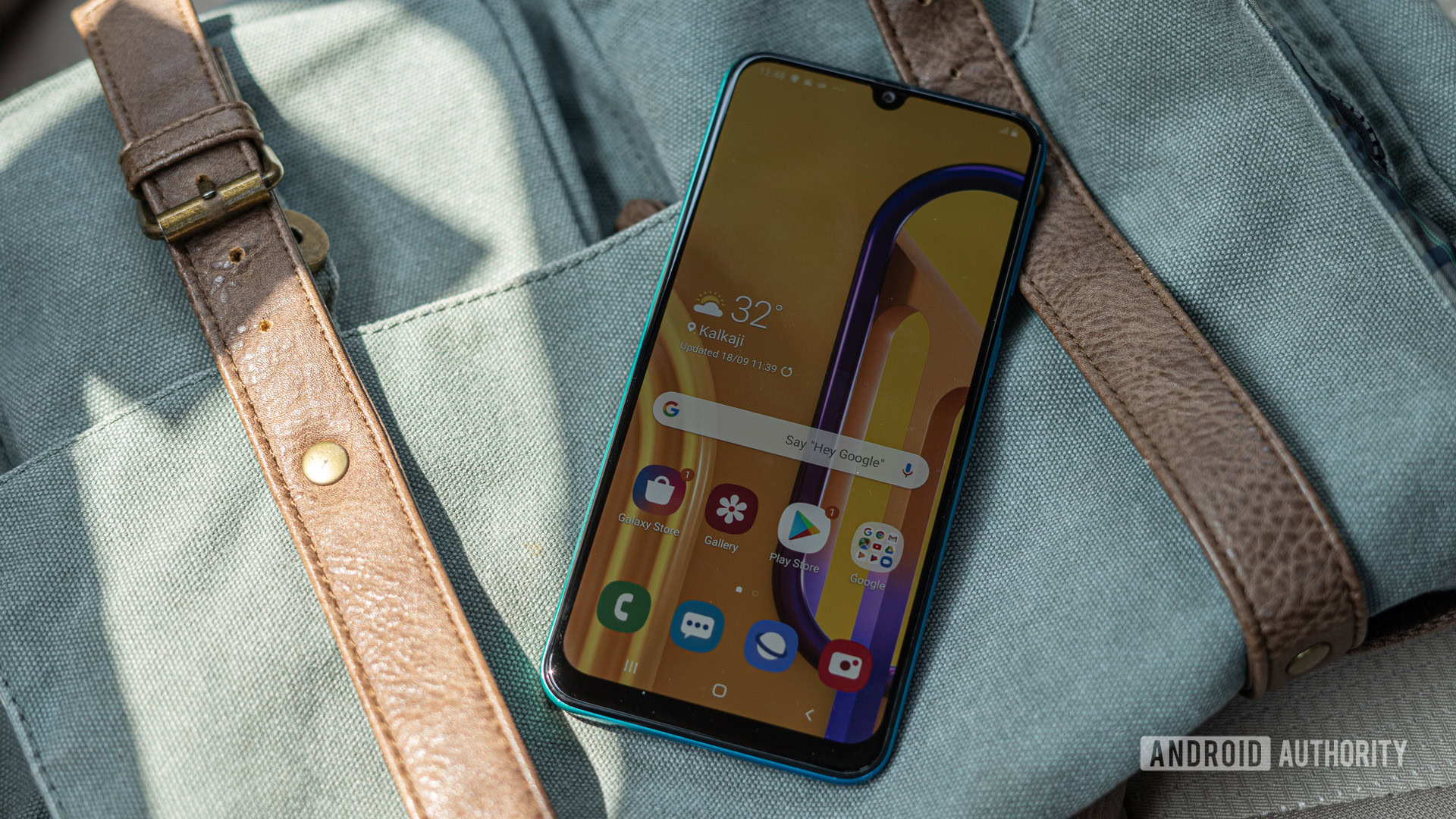
After a series of hits, Samsung’s Galaxy M30s appears to be just coasting along. It just doesn’t do enough to be a stand-out recommendation. In a market segment that is drowning in fantastic options, incremental updates just don’t cut it anymore. It’s not a bad phone, but unless you are fixated on buying a Samsung phone, and to be sure there are reasons for it, it just isn’t a very exciting piece of kit. You could do a lot better with the Redmi Note 7 Pro or one of realme’s many options.
What do you think about the Galaxy M30s? Is great service support, the fantastic AMOLED display, and Samsung’s take on Android enough to veer you towards it? Let us know in the comments section.